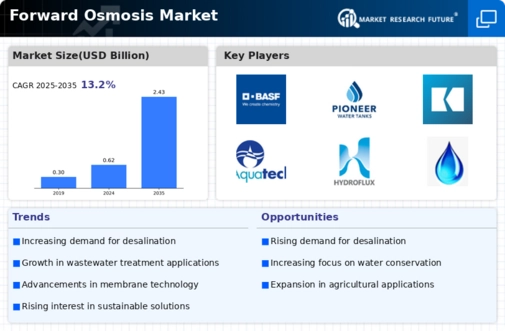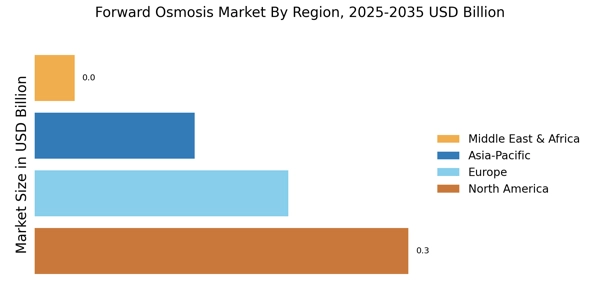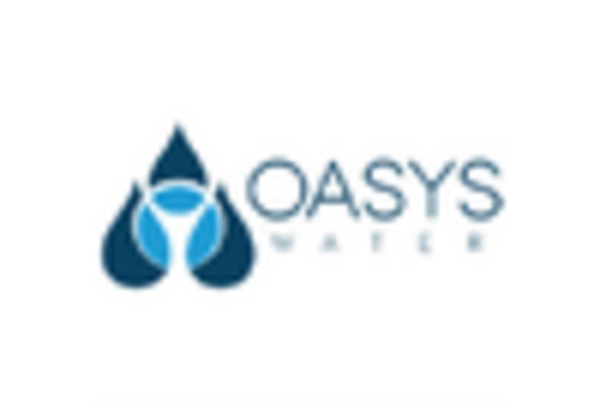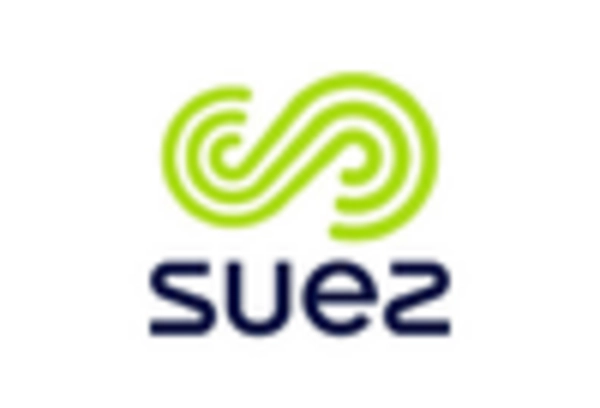Rising Water Scarcity Issues
The Forward Osmosis Market is significantly influenced by the escalating water scarcity issues faced by many regions. As populations grow and industrial demands increase, the availability of clean water is becoming increasingly strained. Forward osmosis presents a viable solution to address these challenges by providing an efficient method for water extraction from saline sources. The market is expected to expand as municipalities and industries seek sustainable alternatives to traditional water treatment methods. Reports indicate that by 2025, the demand for forward osmosis systems could increase by over 20% in regions severely affected by water shortages. This trend underscores the potential of forward osmosis technologies to play a crucial role in alleviating water scarcity.
Environmental Regulations and Standards
The Forward Osmosis Market is increasingly shaped by stringent environmental regulations and standards aimed at promoting sustainable practices. Governments worldwide are implementing policies that encourage the adoption of eco-friendly water treatment technologies. Forward osmosis, with its lower energy consumption and reduced chemical usage compared to conventional methods, aligns well with these regulatory frameworks. As industries strive to comply with these regulations, the demand for forward osmosis systems is expected to rise. Recent studies suggest that compliance with environmental standards could drive a market growth rate of around 12% annually, as companies seek to enhance their sustainability profiles while meeting regulatory requirements.
Technological Innovations in Forward Osmosis
The Forward Osmosis Market is experiencing a surge in technological innovations, particularly in membrane design and materials. These advancements enhance the efficiency and effectiveness of forward osmosis processes, making them more appealing for various applications, including desalination and wastewater treatment. For instance, the development of thin-film composite membranes has shown promise in improving water flux and salt rejection rates. As a result, the market is projected to grow at a compound annual growth rate of approximately 15% over the next five years. This growth is driven by the increasing need for efficient water purification methods, which forward osmosis can provide, thereby positioning the industry favorably in the broader water treatment landscape.
Growing Awareness of Water Reuse and Recycling
The Forward Osmosis Market is witnessing a growing awareness of the importance of water reuse and recycling. As water scarcity becomes a more pressing issue, industries and municipalities are increasingly looking for effective methods to treat and reuse wastewater. Forward osmosis offers a promising solution, enabling the recovery of water from various sources, including industrial effluents and agricultural runoff. This trend is likely to propel the market forward, with projections indicating a potential market growth of 18% by 2027. The increasing emphasis on circular economy principles further supports the adoption of forward osmosis technologies, as stakeholders recognize the value of treating and reusing water to ensure sustainable resource management.
Increased Investment in Water Treatment Technologies
The Forward Osmosis Market is benefiting from increased investment in water treatment technologies. Governments and private sectors are recognizing the importance of sustainable water management and are allocating funds to develop innovative solutions. This trend is particularly evident in regions where water quality is a pressing concern. For example, investments in forward osmosis research and development have led to breakthroughs that enhance system performance and reduce operational costs. It is estimated that the market could see an influx of investment exceeding 1 billion dollars by 2026, as stakeholders aim to capitalize on the growing demand for efficient water treatment solutions. This financial backing is likely to accelerate the adoption of forward osmosis technologies across various sectors.


















Leave a Comment